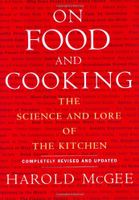Advertisement
Slow Browning in Moist Foods
Appears in
By Harold McGee
Published 2004
There are exceptions to the rule that browning reactions mostly require temperatures above the boil. Alkaline conditions, concentrated solutions of carbohydrates and amino acids, and prolonged cooking times can all generate Maillard colors and aromas in moist foods. For example, alkaline egg whites, rich in protein, with a trace of glucose, but 90% water, will become tan-colored when simmered for 12 hours. The base liquid for brewing beer, a water extract of barley malt that contains reactive sugars and amino acids from the germinated grains, deepens in color and flavor with several hours of boiling. Watery meat or chicken stock will do the same as it’s boiled down to make a concentrated demiglace. Persimmon pudding turns nearly black thanks to its combination of reactive glucose, alkaline baking soda, and hours of cooking; balsamic vinegar turns nearly black over the course of years!


